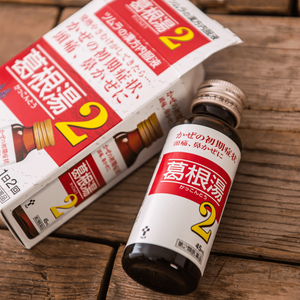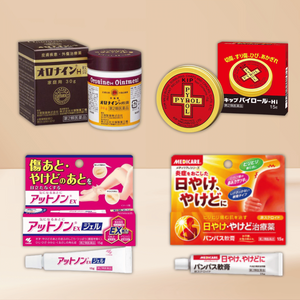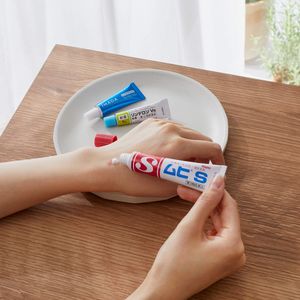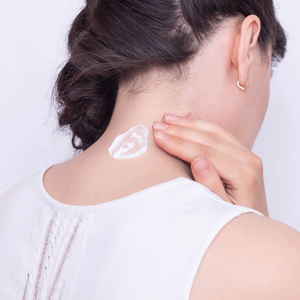Recommended Motion Sickness Medications from Japan: Understanding the Principles, Ingredients, Selection Methods, and Side Effects!
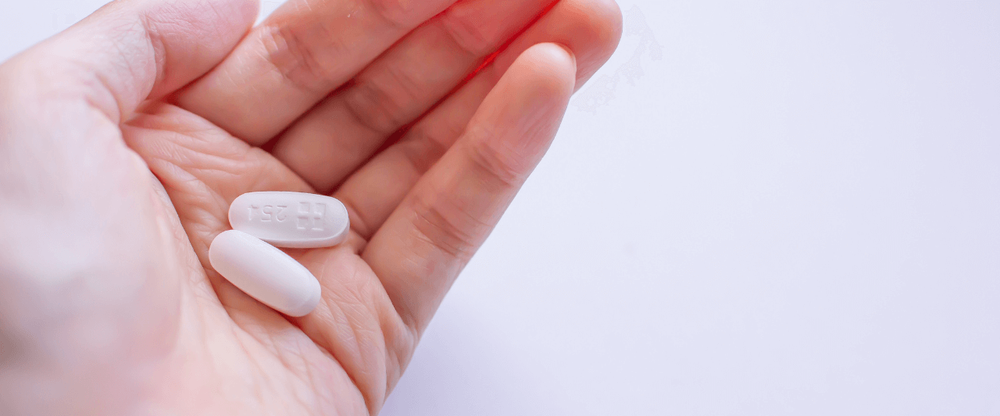
- Principles of Motion Sickness Medications
- Common Ingredients and Effects of Motion Sickness Medications
- Methods for Selecting Motion Sickness Medications
- How to Use Motion Sickness Medications Most Effectively
- Who Should Avoid Motion Sickness Medications
- Side Effects and Precautions of Motion Sickness Medications
- Top 15 Recommended Motion Sickness Medications
Principles of Motion Sickness Medications
During long flights or traffic jams, people often experience the discomforts of motion sickness, such as car sickness, seasickness, and air sickness. These symptoms are collectively known as motion sickness. It primarily occurs when the body's three systems fail to coordinate: the vestibular system of the inner ear, the proprioceptive system, and the visual system. When the body and inner ear perceive bumps and accelerations from a vehicle, but this information does not match the visual input, it can lead to an imbalance in the autonomic nervous system and sense of balance, resulting in nausea, dizziness, headaches, and other motion sickness symptoms.
Motion sickness medication reduces information overload and prevents brain confusion
The best prevention method is to take appropriate medication in advance to reduce discomfort caused by visual and inner ear balance disorders. If you are tired, sleep-deprived, or nervous before traveling, motion sickness symptoms are more likely to occur, so it is advisable to take preventive medication ahead of time.
Common Ingredients and Effects of Motion Sickness Medications
The most common motion sickness medications on the market primarily consist of first-generation antihistamines and anticholinergics that block the neurotransmitter acetylcholine.
| Effect | Ingredient | Description |
|---|---|---|
| Antihistamine Effect (Reduces Allergic Reactions) | Diphenhydramine, Pheniramine, Meclizine Hydrochloride | Reduces reactions causing dizziness and nausea. |
| Relaxing Effect on the Parasympathetic Nervous System | Scopolamine | Helps calm the brain, reduces parasympathetic activity and digestive system tension, alleviating nausea. |
| Maintaining Normal Nerve Function | Vitamin B6 | Helps maintain normal nerve function, effectively relieving nausea. |
| Effect of Clearing the Mind | Caffeine Anhydrous, Diprophylline | Alleviates dizziness due to imbalance and eases headaches caused by motion sickness. |
| Stomach Soothing Effect | Benzocaine | Numbs the stomach lining to reduce nausea and a queasy feeling. |
How to Choose Motion Sickness Medication
Here are the steps to selecting motion sickness medication:
1. For Nausea and Vomiting, Choose Products with "Scopolamine"
For those prone to nausea, it is advisable to choose medication containing Scopolamine, as it can stabilize the autonomic nervous system, preventing and alleviating motion sickness. Both Taisho Pharmaceutical's "Sempa Rapid-Dissolve Motion Sickness Medication" and SS Pharmaceutical's "Apple Rabbit Seasickness Medication" contain Scopolamine. If you're uncertain about which to choose, you can start with these two options.
2. For Dizziness and Headache, Choose Products with "Antihistamines" or "Caffeine Anhydrous"
If experiencing dizziness or headache, select medications containing antihistamines or caffeine anhydrous. Ingredients such as Diphenhydramine, Pheniramine, and Meclizine Hydrochloride can regulate autonomic nerve function and suppress the emetic center's stimuli. However, antihistamine ingredients may cause drowsiness, so they should be avoided before activities that require staying awake. Caffeine anhydrous can relieve headaches and prevent drowsiness. Most motion sickness medications contain these ingredients.
3. For Children: Verify Suitable Age or Choose Children's Motion Sickness Medication
When providing medication to children, take extra care to confirm the appropriate age range, and choose a product suitable for their age. If children are not comfortable with tablets, consider liquid formulations or fruit-flavored products.
4. To Avoid Feeling Drowsy During Travel: Choose Non-Drowsy Ingredients
If you wish to stay awake during your travels, it's advisable to choose medications with non-drowsy ingredients. Eisai's "Travelmin R," which contains Difenidol Hydrochloride, is less likely to cause drowsiness.
5. For Long Journeys, Choose Medication That Requires Only One Dose per Day
If you are traveling for an entire day, it is recommended to choose medication that only needs to be taken once a day, reducing the need for frequent doses. Some motion sickness medications require multiple doses a day, so it's important to confirm the duration of effectiveness to avoid unexpected lapses in efficacy. Motion sickness medications are usually taken 30 minutes to an hour before travel. By choosing a once-daily medication, you reduce the hassle of deciding "when should I take it?" and can focus more on your travel and activities.
6. Choose the Appropriate Form of Motion Sickness Medication
Motion sickness medications are mainly available in three forms: tablets, liquid, and patches. Understanding the pros and cons of each form can help you choose the right medication for yourself.
- Tablets/Capsules: Easy to carry and quickly absorbed orally. You only need to take them 30 minutes to 1 hour before departure, but for longer journeys, they should be taken every six hours.
- Liquid: Does not require water for ingestion, easy to swallow, and dosages can be adjusted by age, making it suitable for the elderly, children, and those who have difficulty swallowing tablets. It is recommended to take it 30 minutes to 1 hour before boarding.
- Patches: Usually contain Scopolamine and need to be applied behind the ear at a hairless area 4 to 6 hours before departure. The effects last for up to three days and are suitable for long trips.
How to Use Motion Sickness Medication Most Effectively
Motion sickness medication can come in different forms, such as oral and patch. It's advisable to take oral forms 30 minutes to 1 hour before traveling, while patches should be applied at least 4 hours in advance to a hairless area, such as behind the ear, for optimum effect. Many people tend to forget to take motion sickness medication in advance, which can affect the medication's efficacy. The Food and Drug Administration (FDA) reminds everyone to read the instructions carefully before using motion sickness medication, as different products can have varying effects and durations. Incorrect usage could lead to overdose risks and harm.

Who Should Avoid Motion Sickness Medication
- Patients with Benign Prostatic Hyperplasia: Motion sickness medication can suppress the secretion of urine, exacerbating the symptoms of benign prostatic hyperplasia.
- Glaucoma Patients: May cause an increase in eye pressure, worsening glaucoma.
- The Elderly: Often take multiple chronic medications, which could interact. Their impaired liver and kidney function makes them more susceptible to side effects.
- Pregnant Women Less Than 3 Months Pregnant.
Side Effects and Precautions of Motion Sickness Medication
-
Post-Usage Precautions
After taking motion sickness medication, refrain from driving or operating machinery, as many antihistamine ingredients can cause drowsiness. Additionally, side effects such as dry mouth, palpitations, headaches, and difficulty urinating may occur. If any discomfort arises, discontinue use immediately and seek medical advice. -
Avoid Combining with Other Medications and Alcohol
Motion sickness medication should not be combined with cold or allergy medications that contain antihistamines to avoid overdose and increased risk of side effects. Additionally, alcohol should be avoided during use, as it can enhance the medication's effects and increase the risk of side effects.
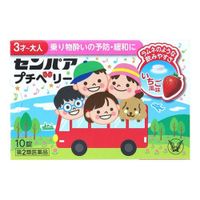
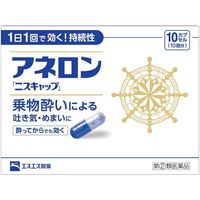
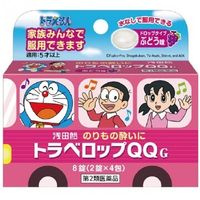
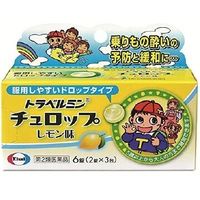
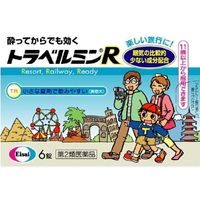
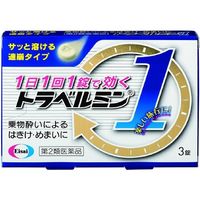
![[Class 2 drugs] Asada Ame Travelop QQ Jelly for children (Strawberry flavor) 4 packets](https://image.dokodemo.world/catalog-skus/9063582/74d18410a7c768a439b1d79bfd512fea.jpg?d=0x0)
![[Class 2 drugs] Taisho Pharmaceutical Sempaa Kids Drink 20mL x 2 bottles](https://image.dokodemo.world/catalog-skus/9063578/31235fe56202c93cebe9bdb18d2250c6.jpg?d=0x0)
![[2nd-Class OTC Drug] Travelops QQG Grape (8 Drops)](https://image.dokodemo.world/catalog-skus/120113/a78d6c73ab86d1bbfd841ac7ccb7e0fd.jpg?d=0x0)
![[Designated second -class drugs] [Designated class 2 drug] motion sickness medicine "Niss Cap" 10 capsules](https://image.dokodemo.world/catalog-skus/9051028/27312791ad8de499dcfe2d94e22ef13d.jpg?d=0x0)
![[2nd-Class OTC Drug] Travelmin Churop Grape Flavor 6 tablets](https://image.dokodemo.world/catalog-skus/196813/2b01c57d813fe45d0e8e159eed945491.jpg?d=0x0)
![[2 drugs] Toraberoppu QQ S cider taste 8 tablets](https://image.dokodemo.world/catalog-skus/120114/f32e6854f664c2d07352bf0cbeab971f.jpg?d=0x0)
![[2nd-Class OTC Drug] Travelmin Churop Lemon Flavor 6 tablets](https://image.dokodemo.world/catalog-skus/196814/81ff848ea783988b76749777d5247911.jpg?d=0x0)
![[2nd-Class OTC Drug] Travelmin Junior 6 tablets](https://image.dokodemo.world/catalog-skus/196812/c059432d7972b27bc59079a2f2034eb4.jpg?d=0x0)
![[2nd-Class OTC Drug] Travelmin 6 tablets](https://image.dokodemo.world/catalog-skus/196811/791bbb79f5a961a993af0d21dd3f5aa0.jpg?d=0x0)
![[Designated Class 2 drug] [Designated class 2 drug] motion sickness medicine "Niscap" 6 capsules](https://image.dokodemo.world/catalog-skus/9051027/ce7b4fef9de467a3eb8625806dd05a61.jpg?d=0x0)
![[2nd-Class OTC Drug] Kurashirhythm Medical Travel Care Fast Dissolving Tablets 16 tablets](https://image.dokodemo.world/catalog-skus/9048810/8ff7fb206abe88fa0be53a1330569539.png?d=0x0)
![[2nd-Class OTC Drug] Pansilon Travel SP 12 tablets](https://image.dokodemo.world/catalog-skus/61941/cdfe4f6862fe9fd753285441ebf0a0bd.jpg?d=0x0)
![[2nd-Class OTC Drug] Children's Cool Sky Kitty 20ml x 2 bottles](https://image.dokodemo.world/catalog-skus/61952/3579ef5a0935a7d13ab78866caca22cc.jpg?d=0x0)
![[2nd-Class OTC Drug] Travelmin 1 (3 tablets)](https://image.dokodemo.world/catalog-skus/213842/c858bcec3f5e3ea7defc8dcfef8430b3.jpg?d=0x0)
![[2nd-Class OTC Drug] Travelmin Family 6 tablets](https://image.dokodemo.world/catalog-skus/196815/f2e59dcee60b46a380344ada269fa0df.jpg?d=0x0)
![[2nd-Class OTC Drug] Travelmin R 6 tablets](https://image.dokodemo.world/catalog-skus/198123/905e914f2b0080337051b7b1e7163c2a.jpg?d=0x0)
![[2nd-Class OTC Drug] Jintan. Pord 5 bottles 10MLX5A](https://image.dokodemo.world/catalog-skus/1741976/cb9536e89f5705af52db9f115e1f57c6.jpg?d=0x0)
